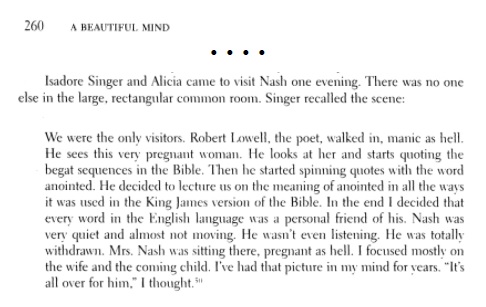The most recent "Blacklist" episode suggests a review —
"Where past and future are gathered" — Four Quartets
The most recent "Blacklist" episode suggests a review —
"Where past and future are gathered" — Four Quartets
For the above title, see a Log24 search.
Related material:
Oscar Hammerstein in Episode 6 of "Mrs. Davis" —
Flores para los Muertos

Exercise: Show that Dürer's 1514 "magic" square is an affine automorphism.
For a solution, see other posts now tagged Affine Squares.
Continued from yesterday's "Kernel" —
The ACM (Association for Computing Machinery)
has a news release today on an expert on "kernels,"
in the sense that they are used in AI —
"Schölkopf [link added] is recognized for his
widely used research in machine learning,
advancing both mathematical foundations and
a broad range of applications in science and
industry."
From Schölkopf in 2002 —
From a post of September 24, 2011 —
Weyl on coordinate systems,
Cassirer on the kernel of being,
and A Study in Art Education.


Related narrative: Bosch by Snaith . See also . . .
Neil Welliver, great American painter, father of Titus Welliver
Titus Welliver Says "Losing His Way" Led Him Back to Painting
"Carny, also spelled carnie, is an informal term
used in North America for a traveling carnival
employee, and the language they use, particularly
when the employee operates a game ("joint"),
food stand ("grab", "popper" or "floss wagon"),
or ride ("ride jock") at a carnival." — Wikipedia
* See Gresham in this journal.
See also Tolkien on allusions.
Discuss —

From some Canadian legal boilerplate —
E. Be able to provide complete, clean, unencumbered
chain of title for the Project, must have all the rights,
releases and clearances necessary to produce, own and
exploit the Project and for deployment of the Project . . . .
Weak Links in the Chain of Title —
A 2006 biography of geometer H.S.M. Coxeter:
The Aleph (implicit in a 1950 article by Coxeter):
Click on images
for further details.
The New York Times reports a March 2 death —
"A product of Britain’s Royal Academy of Art,
Mr. Stobart moved to the United States in 1970,
when conceptual art, Op Art and minimalism
were riding high in the wake of Abstract Expressionism.
Affable, unassuming and unfailingly candid, Mr. Stobart
would have none of it. 'I’ve never bought it, and the
general public has never bought it either,' he said of
abstract art in an interview with The Boston Globe in 1986.
'That’s a lot of baloney, that stuff.' ”
See also duck art from the Groucho school.
Powered by WordPress